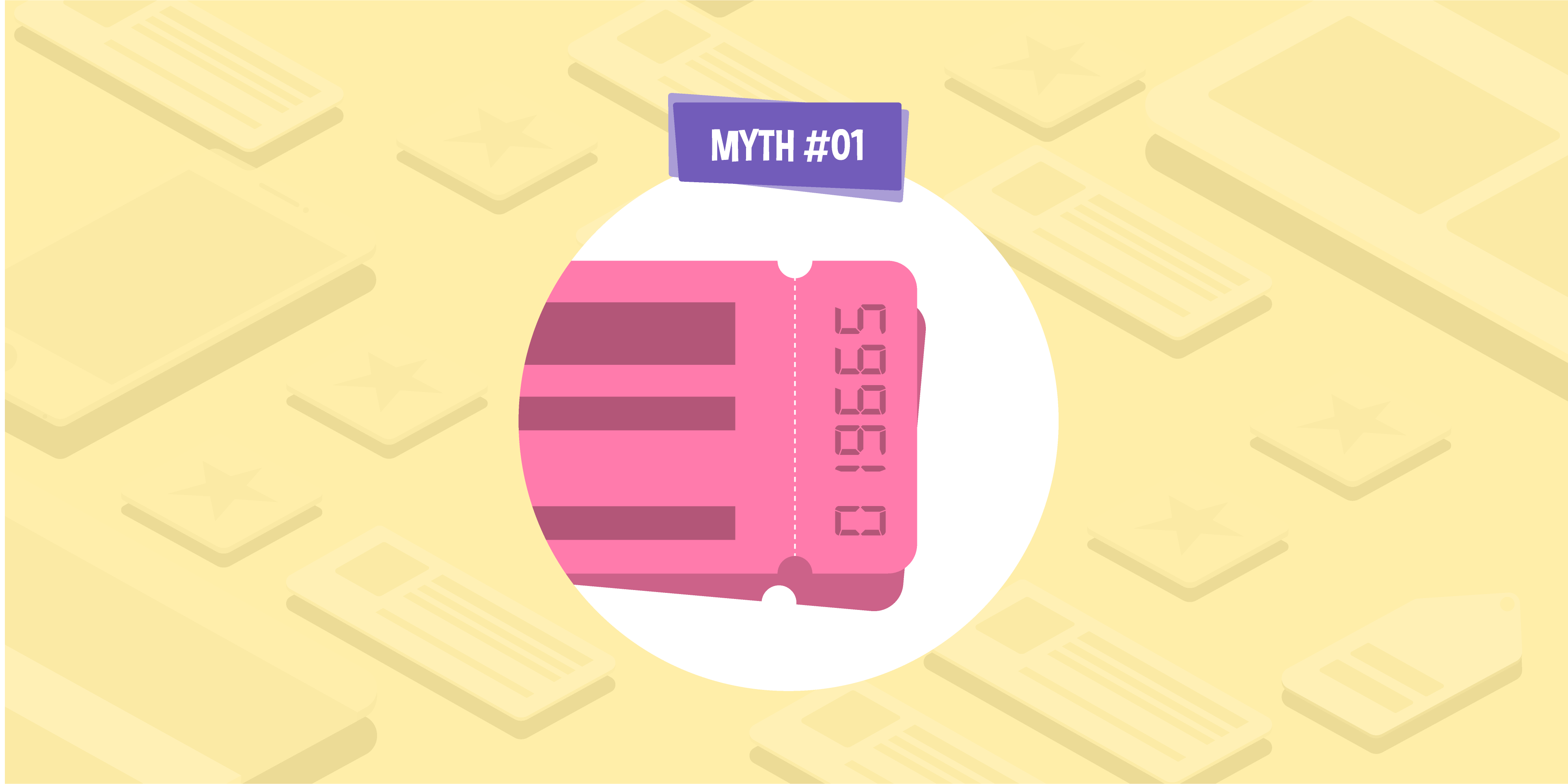
- 19 Apr 2021
- 8 Min read
How to write brilliant buying guides: 5 tips that will drive traffic and increase conversions
More and more people are using the internet to inform their purchases these days, with over 87% of shoppers now beginning their buying journey on digital channels[i]. The purpose of a buying guide is to help make that journey easier for the customer, providing all the information they need to make an informed decision.
Whether your goal is to drive online sales, increase leads, or just get people through the doors of a bricks-and-mortar store, it’s highly likely that buying guides will benefit you. Buying guides can help your brand by:
- driving conversions, especially for big-ticket items that customers are likely to spend a lot of time researching before buying;
- boosting your site’s E-A-T: expertise, authority, and trustworthiness;
- building brand awareness and customer loyalty, which can lead to conversions and repeat custom further down the line; and
- improving SEO and boosting rankings across your site, particularly for your key product category pages.
Now that I’ve explained why you should be producing buying guides for your brand, I’ll guide you through the steps of creating content that will help you achieve the benefits outlined above.
Tailor the content to the needs of the customer
Perhaps the most important thing to remember when creating a buying guide is that you need to tailor the content to suit the needs of the customer. Before you begin, you need to work out who you are writing the guide for and what stage of the buying journey they are at. When you know this, it’s much easier to create a buying guide that includes the information they need. And, if you can provide what they’re looking for, they’re more likely to make a purchase.
There are a few different types of buying guide to suit customers at different points in the buying journey:
- Beginner’s guides for first-time purchasers: These guides are for shoppers who are right at the start of the buying journey — they likely haven’t made up their minds about whether they want, or need, to make a purchase. For example, ‘Is a memory foam mattress right for me?’ would be a good example of content geared towards a first-time purchaser looking for a broad overview.
- Product comparison guides: This content is for customers who have already decided to make a purchase but want to learn more about which specific product is going to be best for their individual needs. This sort of buying guide provides a breakdown of the key differences between two or more products or product types, e.g. ‘Gas, ceramic, induction, and electric hobs: Which is right for you?’
- Guides to buying product add-ons and extensions: These guides are aimed at users who already own a particular product but may be in the process of researching accessories, add-ons, or upgrades. They will already have a reasonably advanced knowledge of the product and will be looking for ways to get even more out of it, e.g. ’10 best phone cases for an iPhone 12′.
- Post–purchase usage guides: These guides are aimed at customers who have already bought a product or service, and normally cover aftercare topics. The purpose is to add value for the buyer, increasing brand loyalty and encouraging repeat custom. They can also be used to promote upgrades or relevant accessories or add-ons, e.g. a guide about caring for a new leather sofa could be used to promote cleaning kits.
The overall style and tone of the content should be different for each guide, to suit the level of experience and knowledge the reader will have. A beginner’s guide will probably need to be less technical than one for a more informed customer — a guide about buying your first car would need to be much more beginner-friendly than one about buying parts to upgrade a vintage vehicle, for example.
If your prospective customers have varying levels of experience and knowledge, then remember you can always create separate buying guides to cater to them individually. The same goes for B2B and B2C customers, if your site caters to both audiences.
Make the information easy to navigate and digest
Your target visitor is going to want to find the information they need in as little time as possible. So, don’t make it hard work for them. Ask yourself: how can I convey the necessary information to the reader quickly, simply, and clearly?
Creating a structure that is easy to navigate will help greatly with this. Break content into logically organised sections and use bullet points, charts, or tables to condense information where appropriate — don’t confront the reader with a wall of text. You should also use headers and subheaders with page jumps where possible so the reader can quickly skip ahead to the content that is most relevant to them. This can benefit your site’s SEO, too.
It’s also essential that your content is well written, as a poorly written guide will make the information much harder to digest, and it won’t reflect well on your brand. If you don’t have any in-house writers who can help you with this, you may want to hire a copywriter or agency to deliver the content for you.
Use imagery to make information clearer
It’s true what they say: a picture can tell a thousand words. So, when creating your buying guide, consider using visuals, photos, or even video content to make the information easier to digest. Prospective customers might be looking for an at-a-glance size guide or visual comparison of different products, and this will be much easier to communicate using images. Plus, depending on what the buying guide is about, this could also provide a valuable opportunity to include some photographs of your products.
Be balanced and informative
Of course, the endgame is always going to be persuading the reader to make a purchase with your business. But, if you want to get the best results, you should avoid being excessively biased in your buying guides. You can — and should — recommend your relevant products and services throughout, but don’t leave useful information out just because it’s not directly relevant to your products.
For example, if you’re writing a buying a guide about different types of ovens, it would greatly affect the quality of the content if you left out gas ovens simply because you don’t sell them. It’s generally better to give prospective shoppers the full picture and let them make an informed decision.
It might sound counterintuitive, but being honest will build trust and awareness, and will help to establish your site as an authority in the eyes of the user. And, if they decide to go ahead and make a purchase later, your brand will be at the top of their list. Plus, it can help your content rank well, as search engines will be looking to prioritise comprehensive guides that provide the reader with all the information they need.
So, be balanced and fair, and prioritise being informative over being advertorial, even if that means you need to mention products you don’t sell.
Let search lead the way
The most successful buying guides are those that cover topics and questions that users are actually interested in. By thinking in terms of what users are searching for, you can design buying guides that are more likely to drive highly relevant traffic to your site and deliver information shoppers want.
The best way to do this is to carry out keyword research to establish the most relevant and valuable search topics. Then, you can optimise your buying guides to help drive this traffic to your content. This is quite a technical process that calls for enterprise-level tools, so if you need help with this, speak to one of our SEO experts today.
Drive conversions with internal links
When it comes to driving conversions, internal links are key. You want to make it as easy as possible for a buyer to navigate to your key commercial pages from within the buying guide, so make sure you link to these throughout.
Internal links are also a crucial SEO factor, helping to spread link equity across your site and improve rankings across all pages. You can maximise these benefits by using descriptive, optimised anchor text. For example, writing ‘view our full range of outdoor LED lights’ instead of ‘view our full range of outdoor LED lights here’. This also helps with accessibility.
You should also be adding internal links to your new buying guide where appropriate. It’s likely that customers who are reading your product descriptions and category content may be close to making a purchase, and linking to a relevant buying guide could help to seal the deal. Plus, having plenty of internal links to your buying guides will help to improve rankings, too.
In today’s crowded digital landscape, it’s important that you take every opportunity to get your brand in front of your target audience, and buying guides offer a great way to do just that. Take these tips on board when creating buying guides for your site, and you should be able to increase brand awareness, attract organic traffic, and drive sales.
If you’d prefer to let someone else do the hard work, why not let our expert content marketing team write your buying guides for you? Using the latest SEO tactics and knowledge, our copywriters can work with you to create quality content that does your brand justice. Get in touch to learn more.
[i]Research by Salesforce and Publicis.Sapient, published in https://www.retaildive.com/news/87-of-shoppers-now-begin-product-searches-online/530139/.
Featured image screenshot source: https://www.johnlewis.com/buying-guides/car-seats-buying-guide
Lydia Carroll
Head of Content

